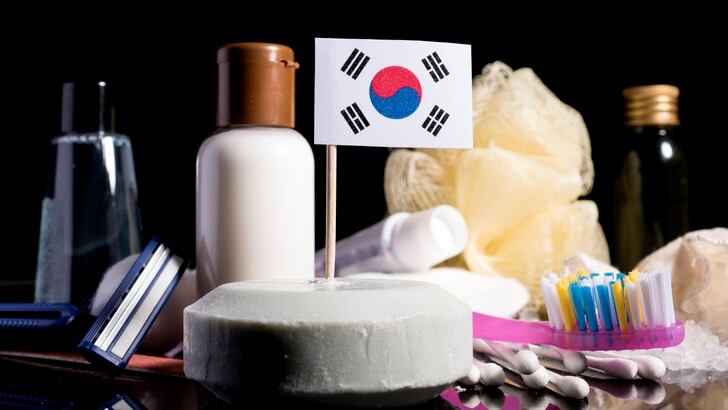A report published by Korea’s Ministry of Food and Drug Safety (MFDS) stated that the country’s export of cosmetic products increased by 4.2% in value to hit KRW7.6tn won (USD$6.5bn).
Consequently, the cosmetics trade surplus increased by 12.4% to KRW6.15bn (USD5.03bn), marking its eighth consecutive year of surplus since 2012.
According to the data complied by MFDS, the cosmetics trade has recorded an average annual growth rate of 26% from 2015 to 2019.
Comparing the value of cosmetics exports by country, South Korea's exports came behind France, the United States and Germany.
This makes it the fourth largest exporter globally, surpassing Italy, China, Spain and Japan.
Minister of Food and Drug Safety Lee Eui-Kyung said these results solidified Korea’s position as a global ‘cosmetics powerhouse’.
China remains top buyer
By country, China was the largest market for Korean beauty products again, with exports of such goods hitting $3,06bn and accounting for 46.9% of total export shares.
Other main export destinations for K-beauty products included Hong Kong, the US and Japan.
South Korea’s efforts to diversify its export markets saw exports to Japan, Vietnam, Australia and the UK increase by 32.7%, 32.7%, 22.9% and 8.5% respectively compared to 2018.
Additionally, South Korea also saw exports to emerging markets such as Russia, Ukraine and Kyrgyzstan.
Compared to 2018, shipments to Russia increased 34.1% while exports to Ukraine and Kyrgyzstan increased 117.3% and 111.3% respectively.
Conversely, imports of cosmetic products fell by 3.1% with France as the country’s top cosmetics importer followed by the US, Japan, Thailand and Germany.
Skin care leads production
In 2019, South Korea’s cosmetics production grew by 4.9% to reach a value of KRW16.26tn (USD13.7bn).
Production of skin care products accounted for around 60%, the largest share, followed by colour cosmetics, hair care and body cleansing products.
The local cosmetics industry has also seen a 7.3% increase in the production of functional cosmetics, such as anti-ageing, whitening, and sun protection products.
According to the data, functional cosmetics production recorded an annual growth rate of 8.5% from 2015 to 2019.
The data also noted that production of cosmetics with only one function have increased by 15.2% while products with two or more functions have decreased by 2%.
LG Household & Health Care. topped the list of cosmetic producers, accounting for 30.50% of products produce, with Amorepacific not far behind at 30.22%.
Other top South Korean cosmetic manufacturers included Aekyung Industrial, Coreana Cosmetics and Carver Korea.
“The continued growth of the cosmetics industry is the result of the government's regulatory reform and support on top of the industry's continuous technological development,” said Minister Lee.
Lee added that the MFDS would continue to support the growth of the South Korea cosmetics industry by supporting regulatory harmonisation and reducing trade barriers.
Additionally, the agency would continue to nurture new areas of growth in the cosmetics industry such as personalised cosmetics.
Lee said: “The MFDS will continue to do its best to achieve globalisation of K-Beauty by expanding institutional support to foster the future of the cosmetics industry.”





